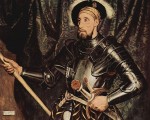
-
Nicholas Carew

-
Bradgate Park commemorates Lady Jane Grey – 8-16 July 2017

Thank you to Tamise Hills of the Lady Jane Grey Reference Guide for sharing this bit of news on Facebook.
The Loughborough Echo have reported that Bradgate Park, which is the location of the ruins of Lady Jane Grey’s family home, is commemorating the short reign of Lady Jane Grey, or Queen Jane, with events including dusk tours, ghost walks, a talk and book signing with Alison Weir and a remembrance service at the Chapel.
[Read More...] -
Comets and composers
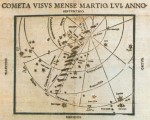
7th March 1556 was one of the days on which the Great Comet, or the Comet of Charles V, was seen and recorded by Paul Fabricius, mathematician and physician at Emperor Charles V’s court.
[Read More...] -
Transcript of Mary, Queen of Scots live chat

Here is the transcript of the lively discussion we had over the weekend about Mary, Queen of Scots. Thank you for all those who came as this turned out to be a very memorable discussion on such a fascinating character.
[Read More...] -
Juan Luis Vives
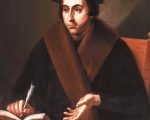
On this day in history, 6th March 1492, Juan Luis Vives was born in Valencia, Spain.
Juan Luis Vives was a scholar and humanist, and is known for being the friend and adviser of Catherine of Aragon, first wife of King Henry VIII, and the tutor of the couple’s daughter, the future Mary I. Catherine of Aragon commissioned him to write the treatise Education of a Christian Woman (Instruction of a christen woman) and he created the Satellitium animi, or Escort of the Soul, a study plan for the Princess Mary, which also included “spiritual mottoes and devices”. It was the forerunner of the 16th- and 17th-century emblem books, books which contained a number of emblematic images with an accompanying explanatory text.
[Read More...] -
This week in history 6 – 12 March

On this day in history, 6th March…
1492 – Birth of Juan Luis Vives, scholar, humanist and tutor of Mary I, in Valencia, Spain.
[Read More...]
1536 – Introduction into Parliament of the “Act for the Suppression (or Dissolution) of the Lesser Monasteries”. The act affected the “lesser monasteries”; those with fewer than twelve members and those worth less than £200 per year. They were to be dissolved, their heads pensioned off and their members to become secularized or moved to larger monasteries “where they may be compelled to live religiously for reformation of their lives”.
1547 – Thomas Wriothesley lost the Great Seal of his Lord Chancellorship and was confined to his home at Ely Place for abusing his authority. He was found guilty of issuing a commission without the knowledge or permission of the other executors of Henry VIII’s will, but it was probably more to do with his opposition to Edward Seymour, Duke of Somerset, becoming Lord Protector. He was later re-admitted to the Privy Council, a position he’d also lost at his fall. -
The Howard Family Quiz

The Howards were an ancient and important family, but how much do you know about them? Test yourself with this fun quiz.
[Read More...] -
Two great books
-
Expert Talk – Wendy J. Dunn on Thomas Wyatt, The Elder
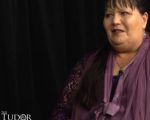
The expert speaker for March is Wendy J. Dunn, author of “Dear Heart, How Like You This?”, “The Light in the Labyrinth” and “Falling Pomegranate Seeds: The Duty of Daughters (Katherine of Aragon Story)”. In this month’s expert talk, Wendy goes into detail about the fascinating Tudor character, Sir Thomas Wyatt, the Elder.
[Read More...] -
The Madness of Juana of Castile
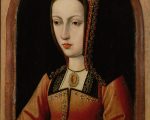
Thank you to regular contributor Heather R. Darsie for this article on Juana of Castile who has gone down in history as “Juana la loca”.
Juana of Castile, known as Juana la Loca or Joanna the Mad, was the elder sister of Catherine of Aragon and sister-in-law to Henry VIII of England. Juana married Philip the Handsome in 1496, when she was 16. She went on to have six children with her husband, including Charles, who later became the Holy Roman Emperor. Juana was an intelligent young woman and, like her sisters, received a considerable education for the time-period. It was reported that Juana could speak the three main languages of the Iberian Peninsula, along with Latin and French.
[Read More...] -
Anne Askew by Roland Hui

Today we have a guest post from Roland Hui as part of his book tour for his debut book “The Turbulent Crown: The Story of the Tudor Queens”.
MadeGlobal Publishing is giving away a copy of Roland’s book at each stop and all you need to do at this stop is to leave a comment below saying which queen or queen consort you feel had the most turbulent life. Leave your comment before midnight on 8th March 2017. One comment will be picked at random and the person contacted for their details.
Over to Roland…
When Henry VIII married Katharine Parr in 1543, the general opinion was that the King had chosen most wisely. Unlike his previous wife, Katheryn Howard, this Katharine was no young lady with a sordid past, but a mature, sensible widow. The new Queen was also known for her piety.
[Read More...] -
Transcript of our live chat with Lauren
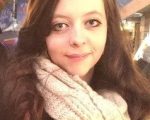
We had a wonderful live chat with historian Lauren Browne on Saturday night. It was all about the reputations of Eleanor of Aquitaine and Eleanor of Castile in the Tudor period.
[Read More...] -
Mary, Queen of Scots – live chat on Saturday 4 March

We’re holding one of our informal live chats on the chatroom this Saturday. Regular contributor Heather R. Darsie will be moderating and you can ask her questions or simply pose questions for debate and discussion. Heather thought it would be nice to talk about Mary’s life after her return from France, but we can stray to her earlier life if you like. We can also discuss books, theories about her… whatever you like, it’s an informal chat.
[Read More...] -
Thomas Campion (1567-1620)
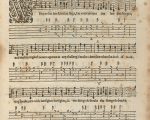
On this day in 1620, Thomas Campion, the famous Tudor and Stuart physician, poet and musician, died. He was laid to rest on the same day he died at St Dunstan-in-the-West, Fleet Street, London.
Campion was born in 1567 and was the son of John Campion, cursitor to the chancery court, and Lucy Searle. His father died when he was nine, so he was brought up by two stepfathers. Campion was educated at Peterhouse, Cambridge, and he was admitted to Gray’s Inn, one of the four Inns of Court in London, in April 1586.
[Read More...] -
Ash Wednesday and St David’s Day

Today is both Ash Wednesday and St David’s Day!
Ash Wednesday was the first day of Lent and was a day of penitence. Before the Reformation banned the practice, priests would bless ashes, which were traditionally made from burning the previous year’s Palm Sunday ‘palms’, mix them with holy water and then mark the congregation’s foreheads with the sign of the cross in ash. As the priest did this, he would say “Remember, man, that thou art dust and to dust thou shalt return.”
[Read More...] -
Pancakes for Shrove Tuesday

You can read all about Shrovetide and Lent in my article “Shrove Tuesday, Pancakes and Lent”, but I wanted to share with you my latest Tudor Cooking with Claire video which features Tim making Tudor inspired pancakes.
Here is the recipe…
Tim’s Tudor inspired pancakes
[Read More...] -
March 2017 Tudor Life Magazine
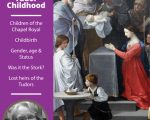
Here’s the full edition of our full-colour 76-page March edition of Tudor Life Magazine. The theme this month is “Children and Childbirth”. Enjoy!
[Read More...] -
Collop Monday
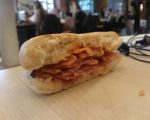
Today is the second of the three days that make up Shrovetide and it’s Collop Monday.
Collop Monday was the traditional day to use up any meat you had in the house before the fasting of Lent began. Collops were pieces of fried or roasted meat.
[Read More...] -
This week in history 27 February – 5 March

On this day in history…
27th February:1531 – Birth of Roger North, 2nd Baron North, politician, diplomat and administrator at the court of Elizabeth I. North served as a Member of Parliament, Privy Councillor and Treasurer of the Household.
[Read More...]
1545 – The English forces were defeated by the Scots at the Battle of Ancrum Moor, near Jedburgh in Scotland.
1555 – Death of Sir William Babthorpe, Member of Parliament and a man who was created Knight of the Bath at the coronation of Edward VI in 1547. Babthorpe had originally been on the rebel side in the Pilgrimage of Grace in 1536, but fortunately swapped sides. -
26 February 1564 – Baptism of Christopher Marlowe

On this day in history, 26th February 1564, the poet, translator and playwright, Christopher Marlowe, was baptised at St George’s Canterbury.
[Read More...] -
Tudor Explorers Quiz

How much do you know about Tudor explorers? Grab your favourite beverage and get those little grey cells working with this fun quiz.
[Read More...] -
Place names – how do you pronounce them?

Following on from my video last week on how to pronounce surnames that come up frequently in Tudor book and primary sources, I’m talking today about British place names.
Just how do you pronounce Balliol College, Magdalen College, Godmanchester, Marylebone, Towcester…? Find out in this video and let me know if you need to know how to pronounce one or you’d like to add one to the list.
[Read More...] -
Reminder: Live chat on Saturday 25 February

Just a quick reminder about our expert live chat which is taking place this Saturday, 25th February. Lauren Browne will be joining us on the chatroom to answer your questions about the talk she did on the reputations and representations of Eleanor of Aquitaine and Eleanor of Castile in the Tudor period.
[Read More...] -
Mary I ebook now available

The latest in our series of Tudor monarchs ebooks is now available to members and this one features articles from a wide variety of authors and historian on Mary I, along with resources such as links to primary sources and reading lists to find out more about this Tudor queen.
[Read More...] -
The Marprelate Controversy

On this day in history, 23rd February 1601, Job Throckmorton, religious pamphleteer and Member of Parliament, was buried at Haseley in Warwickshire.
It is believed that Throckmorton was one of the men responsible for the “Martin Marprelate tracts”. These religious tracts, which attacked the established church, were written under the pseudonym Martin Marprelate (and his sons) and published in 1588 and 1589 by John Penry and Robert Waldegrave.
[Read More...] -
Arthur Tudor Exhibition until 25 February at Worcester Cathedral

I’ve only just been made aware of this exhibition so apologies for the late notice. Thank you to Susan Mintram Mason for sharing it with me. It’s on today, tomorrow and Saturday 11am until 4pm at Worcester Cathedral and it’s free.
It is described as “an exciting new exhibition telling the tragic story of Henry VIII’s older brother through an interactive dramatized audio-tour in the Dean’s Chapel.”
[Read More...] -
23 February 1554 – The Execution of Henry Grey, Duke of Suffolk

On this day in history, 23rd February 1554, at nine o’clock in the morning, Henry Grey, Duke of Suffolk, was led out onto the scaffold on Tower Hill and beheaded. His daughter, Lady Jane Grey, or Queen Jane as I like to call her, had been executed eleven days earlier, along with her husband, Lord Guildford Dudley.
Suffolk’s execution was down to his involvement in Wyatt’s Rebellion, a rebellion which sought to depose Mary I and replace her with her half-sister Elizabeth. The rebellion failed and Suffolk was arrested as he attempted to flee the country in disguise. He was tried for high treason on 17th February at Westminster Hall, having been charged with inciting war in the county of Leicester, posting proclamations against the Spanish marriage, and plotting the death of the queen. He was condemned to death.
[Read More...] -
60 Second History – The Tudor Dynasty

Not that any of you Tudor Society members need this, but I’ve just filmed my first “60 Second History” video. The aim of this new video series is to educate people about Tudor history is easy-to-digest 60-second videos. Everyone’s got a minute to spare and now people can learn a bit about the Tudors in their spare minute.
[Read More...] -
The coronation of Mary of Guise
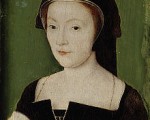
Thank you to Heather R. Darsie for this article on Mary of Guise (Marie de Guise), who was crowned Queen Consort of Scotland on this day in 1540.
Mary of Guise was born on 22 November 1515 to Claude of Lorraine, the Duke of Guise, and Antoinette of Bourbon. She was the eldest of twelve children. Mary was first made a wife in 1534 at the age of eighteen when she married the Duke of Longueville. She had two sons with her first husband, the second of whom died young. The Duke of Longueville passed away in 1537 when Mary was only twenty-one. She was then courted by both Henry VIII of England and James V of Scotland.
[Read More...] -
Ambrose Dudley, 3rd Earl of Warwick

On this day in history, 21st February 1590, Ambrose Dudley, 3rd Earl of Warwick, Master of the Ordnance, Privy Councillor and fourth son of John Dudley, Duke of Northumberland, died at Bedford House on the Strand. He was laid to rest in the Beauchamp Chapel of the Collegiate Church of St Mary, Warwick.
[Read More...]

